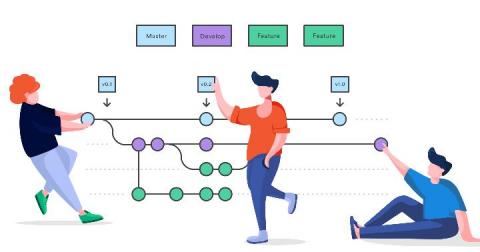Systems | Development | Analytics | API | Testing
%term
The Yellowfin product roadmap into 2020
Software Testing Trends 2019 Recap | Industry Insights
2019 is almost over. The software testing landscape has seen numerous introductions in new testing approaches and innovations at an exponential rate. It has also witnessed the continuation of technological improvement, evolution, and reinvention. As we are progressing to 2020, let’s take a retrospective look at the top trends in test automation and see how we stand after one year.
Want to Build a Responsive and Intelligent Data Pipeline? Focus on Lifecycle
Today, enterprises need to collect and analyze more and more data to drive greater business insight and improve customer experiences. To process this data, technology stacks have evolved to include cloud data warehouses and data lakes, big data processing, serverless computing, containers, machine learning, and more.
5 best practices to innovate at speed in the Cloud: Tip #5 Accelerate data delivery to third party applications and teams through APIs
Billions of times each day, application programming interfaces (APIs) facilitate the transfer of data between people and systems, serving as the fabric that connects businesses with customers, suppliers, and employees. Having the right API strategy in place can make the difference between success and failure when it comes to utilizing APIs to deliver results, reduce response times, and improving process efficiency.
How Industrial Companies Can Achieve Transformative Outcomes With DataOps
Digital transformation provides a valuable opportunity for industrial companies to move away from manual processes and automate with digital technologies to improve safety, productivity, and quality for customers. But it can be a daunting endeavor for many. At Hitachi Vantara, we’ve developed an award-winning Smart Manufacturing Transformation methodology that can ensure full-scale digital transformation and success for our customers.
The Yellowfin product roadmap into 2020
The last 12 months have been tremendous for Yellowfin. We’ve introduced Signals, Stories, a new dashboard build, mobile app and many new improvements to the platform. There is no one else in the market that brings together all of these types of products and it means we’re diverging from our competitors. Our competitors think far more about the analytical experience, while we care about the data consumer and build products for them.
Introducing Kong for Kubernetes: Kubernetes-Native Ingress and API Management
At this year’s KubeCon, we debuted Kong for Kubernetes, the industry’s only fully Kubernetes-native ingress controller that supports end-to-end API management and is backed by an enterprise support subscription.
JavaScript Errors: An Exceptional History - Part II
Hello again! Welcome to the finalé of a two-part series of posts on errors in JavaScript. Last time, we took a look into the history of errors in JavaScript — how JavaScript shipped without runtime exceptions, how error handling mechanisms were later added both to the fledgeling web browsers of the day and to the ECMAScript spec, and how they future efforts to standardise these features would be connected to the politics of the browser wars of the late 90’s and 2000’s.
Robust Development with git-flow, Bitbucket Pipelines and Bitrise
When you start a new project, everything is very easy and agile. You can develop, commit code and publish new versions quickly, without much testing. You probably don’t have a QA team, your test data is similar to your production data and you don’t develop multiple features at the same time. But as the project grows, it starts to become more and more complex.










